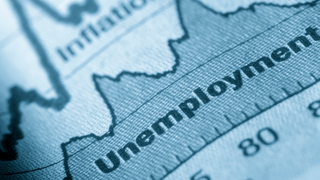Friday’s release of US non-farm payrolls for the month of March was a disastrous starting point for the downturn in the US labour market. The survey was expected to show a decline in employment of 100,000 and an increase in the unemployment rate from 3.5 per cent to 3.8 per cent.
The March report actually ended up capturing more of the early layoffs than the markets had expected, with a decline of 701,000 in March non-farm payrolls, a 1.1 per cent decline in number of hours worked, a 2.987 million decline in civilian jobs and a 1.633 million decline in the labor force. The participation rate fell to 62.7 per cent, and the jobless rate rose to 4.4 per cent.
The bigger than expected rout in the labour market in March will shift some of the expected weakness from the second quarter into the first quarter, but still leaves the United States set for a massive increase in unemployment.
Economists at the St Louis Fed estimate that around 66.8 million workers, or 46 per cent of total employment, are at risk of being laid off due to pandemic suppression measures. If all of these workers were laid off, the US unemployment rate in the second quarter would rise to over 40 per cent, although this is likely an upper bound.
More conservative assumptions yield estimates ranging from 10-30 per cent. For comparison, the unemployment rate during the Great Depression peaked at around 25 per cent in 1933.
The United States has never experienced mass unemployment on this scale before. The social, political and economic consequences will be enormous.
In terms of number of workers, the average of the St Louis Fed estimates points to layoffs in the order of 47 million in the second quarter. Adding this to the existing numbers of unemployed as of February 2020 suggests that unemployed persons will total nearly 53 million in the second quarter. Over 10 million have already lodged initial unemployment claims in a mere two weeks.
The United States has never experienced mass unemployment on this scale before. The social, political and economic consequences will be enormous.
The St Louis Fed also ‘nowcasts’ US economic growth based on the latest incoming data. The nowcast for the first quarter’s GDP is for a contraction of nearly 16 per cent at a seasonally adjusted annual rate. Australian data conventions would express this as a 4 per cent contraction over the quarter, but this is catastrophic enough. Recall that the US economy only began to shut down towards the end of the quarter.
It is the duration rather than the magnitude of the downturn that is most in question. Unfortunately, the United States is tracking among the worst of developed countries, with little sign of a flattening in the pandemic curve. While many hoped for a short, sharp contraction followed by rapid recovery, there is a growing risk this turns into a protracted downturn of unprecedented magnitude.
The Great Depression lasted a decade, mainly because of critical mistakes by policymakers: tight monetary policy, repeated policy-induced shocks to minimum wages and rising trade protectionism. Both tight monetary policy and trade protectionism already threatened a downturn in the United States and world economy before the pandemic hit. The overlay of the pandemic shock has now tipped the US economy into the abyss.






